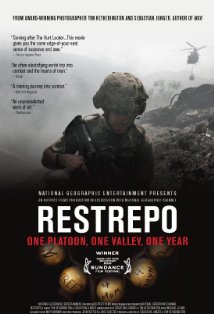
|

War
“It is well that war is so terrible, or we should grow too fond of it!” This memorable quote is said to have been spoken by Robert E. Lee as he watched the Battle of Fredericksburg on December 13, 1862. Actually, that statement has been true of combat throughout history, ever since the first men took up arms against one another – and it’s still applicable to describe 21st-century warfare. Sebastian Junger, the journalist who wrote “The Perfect Storm,” has written a new book titled “War.” The book doesn’t glamorize war but accurately tells it the way it is. In his book, Junger draws a clear distinction between “war” and “combat.” The book probably should have been called “Combat,” because that’s really what it’s about. It’s an eyewitness account that captures the true sense of what combat is like, up close and personal. From 2007-2008, Junger followed the 173rd Airborne’s Battle Company which was serving a 15-month tour of duty on the front lines in Afghanistan’s Korengal Valley, also known as “The Valley of Death,” the epicenter of Taliban operations and the most dangerous place in the world no matter who you are. The rough terrain in that region negates many of the advantages one would expect a modern army to have, often forcing today’s soldiers to revert to old school infantry tactics. “After months of fighting an enemy that stayed hundreds of yards away, the shock of facing them at a distance of twenty feet cannot be overstated,” Junger points out. Responsible combat journalism is a difficult assignment, but Junger is a keen observer and his portrayal of the soldiers is honest and respectful. “War” is a story of heroes – normal guys who have risen to do what the worst situations demand of them. For the most part, “War” does not take a political side but simply records what these guys are up against. According to Junger, the men of Battle Company don’t waste time worrying about politics. They were dropped into the middle of a war zone and basically just want to survive and destroy those who are trying to kill them. For these young men, the courage to fight comes more from the love they feel for their fellow soldier than from any sense of patriotism. They are mostly concerned about protecting their comrades; all are willing to risk their own lives to save the lives of their brothers in arms. Indeed, the greatest fear of many is NOT the very real possibility that they themselves will die. It’s the fear that they might get careless, make a mistake, or show some weakness that will cost another man his life. From a society that encourages the pursuit of self-interest, these soldiers epitomize the greatness that comes from self-sacrifice. Junger spent a significant amount of time with the soldiers, going out on missions and living with them at their remote outpost on the Afghan-Pakistan border. Thus, his book is a well-written depiction of daily life in a typical Army combat unit, although admittedly not every unit is so isolated or heavily involved as this one. Despite the fact that journalists are not allowed to carry a weapon, Junger faced the same dangers and lived under the same rudimentary conditions as the professional soldiers. The troop never knew when they would be under fire, since it usually came suddenly and unexpectedly, so the soldiers had to adapt to the constant threat of attack. (Chapter two contains an account of the ambush in which Salvatore Giunta earned his Medal of Honor.) The author himself survived an ambush, a roadside bomb, sniper fire, and other dangerous situations. Consequently, he lived through the same emotions and trauma experienced by the men that he came to know so well. By the end of the book you will feel as if you’ve been through the same grueling deployment. Besides the mental stress, these men had to endure extreme physical exertion. Carrying at least 75 pounds of ammo and gear, they would scamper up steep rocky mountainsides in intense heat. (“Summer grinds on: A hundred degrees every day and tarantulas invading the living quarters to get out of the heat….The last stretch is an absurdly steep climb through the village of Babiyal that the men call ‘the Stairmaster.’”) “War” exposes all the different sides of combat: from the comic to the tragic, from the heroic to the hellish, from sheer boredom to sheer terror. Junger’s details of the day-to-day lifestyle of a soldier are informative, and his descriptions of battle scenes are riveting and scary. Whether he’s discussing something routine (practicing their combat skills) or explaining the shocking (one man calls out that dinner’s ready and then an RPG takes his arm off), the reader is able to view everything through a soldier’s eyes. Some of the high points of the book are his explanations of how soldiers deal with casualties and find the strength to persevere. The raw emotion experienced by these soldiers is much more intense than most Americans realize, in conditions that few back home can even begin to imagine. “War” is about terror. It’s about violence. Most of all, it’s about brotherhood. Such is the reality of a soldier’s life. With our own busy lives and popular culture occupying so much of our time, it can be hard to relate to the story of these men who are living in such a brutal environment. The camaraderie, savagery, and bravery of combat are all there – along with its randomness. Junger divides his book into three sections: Fear, Killing, and Love. Other than that, “War” lacks a typical plot structure and the narrative jumps around so it can be hard to tell when and where a particular event is occurring. The reader often can’t be sure if it’s summer or winter, if it’s his first embed or his last, and if the action is next door or down the valley. This unorthodox arrangement is understandable, as the focus is on the experience and not the precise chronology. After all, time itself is fluid; depending on the situation, a minute can seem like an eternity, an hour can go by in a blur, or you might even lose track of what day it is. If you’ve ever been in an accident, in the hospital, or a similar stressful situation, you know that the events are often disjointed and dreamlike; you may remember things in disconnected snapshots rather than in the exact order in which they happened. That seems to be pretty much what combat is like. Even though this book is specifically about the war in Afghanistan, it’s also about combat in general. The author delves into ancient truths; for example, men don’t fight for flags, but for each other. Love overcomes fear. The single overarching value that all soldiers uphold is that of looking out for the team instead of yourself. The teamwork that develops between small groups of men in dangerous situations compels them to do things they wouldn’t normally do as individuals: to fight against terrible odds and to sacrifice oneself in order to save others. Junger writes, “The unit that choreographs their actions best usually wins.…The choreography always requires that each man make decisions based not on what’s best for him, but on what’s best for the group. If everyone does that, most of the group survives. If no one does, most of the group dies. That, in essence, is combat.” Junger includes historical information on how men react in combat, both physically and psychologically. He cites military statistics, university research, studies made of soldiers during World War II, and first-hand experiences. However, his attempt to analyze the biology of combat and try to tie it to the theory of evolution was weak and just didn’t fit. If you’ve ever wondered how and why soldiers do what they do or if you like stories of danger, adventure, and human experience, then read this book. The conversations in the book were actual quotations confirmed by Junger with the help of some 150 hours of recorded video. But be forewarned, “War” is not for the squeamish. It would be rated R since the author describes several deaths and does not censor the gut-wrenching violence or salty language of the soldiers. Personally, I would have preferred it if he had left out some of the off-color incidents since they weren’t necessary to the theme. Still, the book gives an insider’s view of what it’s like to be in the military. It will help the average person to understand the hardships that soldiers go through on a daily basis, and the sacrifices they make for the rest of us. It also offers some insight into the minds of our fathers and grandfathers, and why they were reluctant to speak of their war experiences. Did You Know...? Sebastian Junger’s deployment in the Korengal Valley is featured in the documentary film “Restrepo,” which won the 2010 Grand Jury Prize at the Sundance Film Festival. Junger co-directed the film with award-winning photographer Tim Hetherington. “Restrepo” is an experiential film that transports you to the site as if you’re embedded right there with the platoon, so the book and the film complement each other and yet they are very different. Although no American deaths are graphically shown, the violence is real. Some scenes are emotional and heartbreaking. There is a lot of bad language, and some crude humor. “Restrepo” (93 minutes, R) is now showing in select theaters, and it will be released on DVD and Blu-Ray.



These pages are a continuous work in progress.
|
and purchase items via our affiliate links. Thank you!


|




 L
L K
K